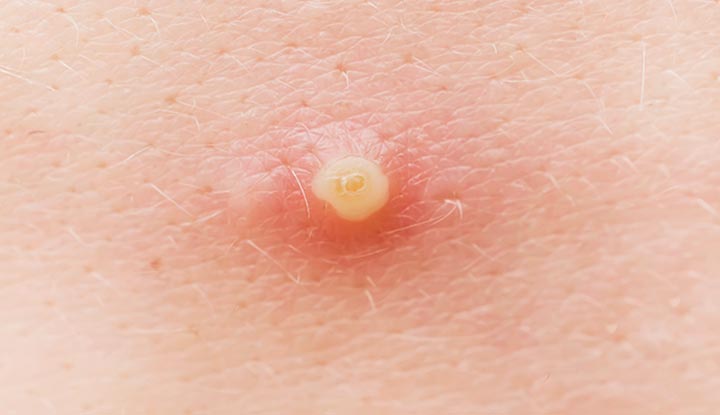Incision and Drainage of Abscesses: Aftercare Essentials

Following the Incision and Drainage of Abscesses Dubai of an abscess, proper aftercare is essential for promoting healing, preventing infection, and ensuring a smooth recovery. Here’s a comprehensive guide to aftercare essentials to help you manage the post-procedure period effectively.
1. Wound Care
Cleaning:
- Follow Instructions: Adhere to the specific wound care instructions provided by your healthcare provider. These instructions will include how to clean the wound and how often to do so.
- Gentle Cleansing: Use a mild, non-irritating soap and clean water to gently wash the area around the incision. Avoid getting soap directly into the wound unless instructed.
- Avoid Scrubbing: Do not scrub or rub the wound. Use a soft cloth or gauze to pat the area dry.
Dressing Changes:
- Frequency: Change the dressing as recommended by your healthcare provider or when it becomes wet or soiled.
- Technique: Use sterile supplies and follow proper hand hygiene before changing the dressing. Gently remove the old dressing, clean the wound, and apply a new sterile dressing.
Monitoring:
- Inspect the Wound: Regularly check the wound for signs of infection, such as increased redness, swelling, or pus. Note any changes and report them to your healthcare provider.
- Drain Care: If a drain was placed, follow instructions on how to care for it. Keep the drain area clean and dry, and avoid pulling or dislodging it.
2. Medication Management
Pain Relief:
- Medications: Take pain relievers as prescribed or recommended by your healthcare provider. Over-the-counter options like acetaminophen or ibuprofen may also be suggested for managing pain and inflammation.
- Adherence: Follow the dosage instructions carefully and do not exceed the recommended amount.
Antibiotics:
- Complete the Course: If antibiotics were prescribed, take them exactly as directed. Completing the full course is crucial to prevent the recurrence of infection.
- Report Side Effects: Inform your healthcare provider if you experience any side effects or adverse reactions to the medication.
3. Activity and Rest
Rest:
- Importance: Ensure you get plenty of rest to support your body’s healing process. Avoid overexerting yourself and take it easy in the days following the procedure.
- Positioning: Find a comfortable position that does not put pressure on the area of the incision. Use pillows or cushions if needed.
Activity Restrictions:
- Avoid Strain: Refrain from engaging in strenuous activities or heavy lifting until you receive clearance from your healthcare provider. Strain on the wound area can impede healing.
- Gradual Return: Gradually return to your normal activities as advised by your healthcare provider. Follow any specific instructions regarding activity levels and exercise.
4. Diet and Hydration
Hydration:
- Fluid Intake: Drink plenty of fluids to stay hydrated. Proper hydration supports overall health and healing.
Diet:
- Balanced Diet: Consume a balanced diet rich in vitamins and nutrients that support wound healing, such as fruits, vegetables, lean proteins, and whole grains.
- Avoid Irritants: If you’re taking antibiotics, avoid alcohol and certain foods that can interact with the medication or upset your stomach.
5. Monitoring and Follow-Up
Signs of Complications:
- Infection Indicators: Watch for symptoms such as increased redness, swelling, warmth, or discharge at the incision site, as well as fever or worsening pain. Contact your healthcare provider if you notice these signs.
- Drain Issues: If the drain becomes blocked, dislodged, or if you have concerns about its function, seek medical advice promptly.
Follow-Up Appointments:
- Scheduled Visits: Attend all follow-up appointments with your healthcare provider. These visits are essential for monitoring your healing progress and removing any drains if necessary.
- Wound Assessment: Your healthcare provider will assess the wound, provide guidance on continued care, and address any concerns you may have.
6. Emotional and Mental Well-Being
Manage Stress:
- Support: Recovery from surgery can be stressful. Seek support from friends, family, or a mental health professional if needed.
- Relaxation: Engage in relaxation techniques such as deep breathing, meditation, or gentle activities that help you feel calm and centered.
Stay Informed:
- Educate Yourself: Understand the signs of complications and the expected timeline for recovery. Knowledge can help you feel more in control and prepared.
7. Hygiene and Infection Prevention
Hand Hygiene:
- Regular Washing: Wash your hands thoroughly with soap and water before and after touching the wound or changing dressings.
- Avoid Contact: Keep the wound area clean and avoid unnecessary contact or exposure to potential sources of infection.
Avoid Irritants:
- Clean Environment: Ensure that the environment around you is clean to reduce the risk of infection. Avoid exposing the wound to dirt, water, or unclean surfaces.
Conclusion
Proper aftercare following the incision and drainage of an abscess is critical to ensure effective healing and prevent complications. By adhering to wound care instructions, managing medications, and following activity restrictions, you can support your recovery and achieve the best possible outcome. Stay vigilant for signs of complications, attend follow-up appointments, and maintain good hygiene practices. If you have any concerns or questions about your recovery, consult with your healthcare provider for personalized guidance and support.